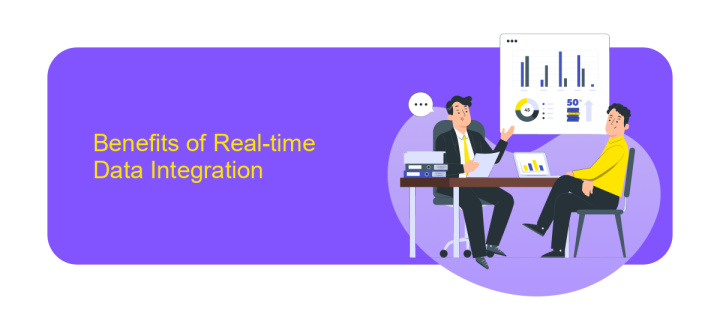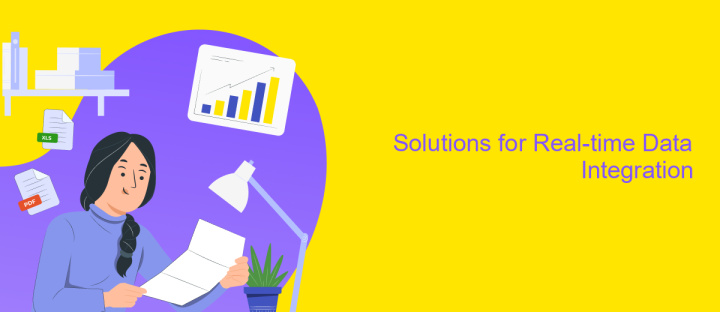Real-time Data Integration to Cloud
In today's fast-paced digital landscape, real-time data integration to the cloud has become essential for businesses seeking agility and efficiency. By seamlessly connecting various data sources to cloud platforms, organizations can ensure instant access to up-to-date information, driving informed decision-making and competitive advantage. This article explores the key benefits, challenges, and best practices for implementing real-time data integration to the cloud.
Introduction
In today's fast-paced digital landscape, the need for real-time data integration to the cloud has become more critical than ever. Organizations are increasingly relying on cloud solutions to manage, analyze, and leverage their data for making informed decisions. Real-time data integration ensures that businesses can access up-to-date information, enhancing their agility and responsiveness to market changes.
- Improved data accessibility and availability
- Enhanced decision-making capabilities
- Scalability and flexibility of cloud services
- Cost-efficiency and resource optimization
- Increased collaboration and productivity
By integrating data in real-time, companies can break down data silos and create a unified view of their operations. This not only streamlines workflows but also fosters a data-driven culture within the organization. As businesses continue to evolve, real-time data integration to the cloud will remain a cornerstone for achieving operational excellence and maintaining a competitive edge.
Benefits of Real-time Data Integration

Real-time data integration offers numerous benefits for businesses aiming to stay competitive in today's fast-paced environment. One of the primary advantages is the ability to make informed decisions quickly. By integrating data from various sources in real-time, companies can gain immediate insights, allowing them to respond swiftly to market changes, customer needs, and operational issues. This agility enhances overall efficiency and effectiveness, leading to better resource management and improved customer satisfaction.
Another significant benefit is the seamless automation of workflows. With tools like ApiX-Drive, businesses can easily set up real-time data integrations without extensive coding knowledge. This not only saves time but also reduces the risk of human error, ensuring data consistency and accuracy across platforms. Furthermore, real-time integration supports enhanced collaboration among teams by providing up-to-date information, fostering a more cohesive and informed working environment. Ultimately, these advantages contribute to a more dynamic and resilient business strategy.
Challenges of Real-time Data Integration

Real-time data integration to the cloud presents several challenges that organizations must address to ensure seamless and efficient operations. These challenges can impact the performance, reliability, and security of the data integration process, making it crucial to identify and mitigate them effectively.
- Latency: Ensuring minimal delay in data transmission to maintain real-time capabilities can be difficult, especially with large data volumes.
- Scalability: As data sources and volumes grow, the integration solution must scale accordingly without compromising performance.
- Data Quality: Maintaining high data quality and consistency in real-time can be challenging due to the continuous flow of data from diverse sources.
- Security: Protecting sensitive data during transmission and storage in the cloud requires robust security measures to prevent breaches and unauthorized access.
- Compliance: Adhering to various regulatory requirements and data governance policies can be complex, especially when dealing with cross-border data transfers.
Addressing these challenges requires a combination of advanced technologies, strategic planning, and continuous monitoring. Organizations must invest in robust infrastructure, adopt best practices, and stay updated with the latest advancements in real-time data integration to ensure successful cloud deployments.
Solutions for Real-time Data Integration

Real-time data integration to the cloud involves the seamless and instant transfer of data from various sources to cloud-based storage and processing systems. This process is essential for businesses that require up-to-the-minute data to make informed decisions, enhance operational efficiency, and deliver real-time analytics.
To achieve real-time data integration, organizations can leverage several solutions. These solutions ensure data is continuously collected, transformed, and loaded into cloud environments without delays, maintaining data accuracy and consistency.
- Data Streaming Platforms: Tools like Apache Kafka and Amazon Kinesis enable the real-time collection and processing of data streams.
- ETL (Extract, Transform, Load) Tools: Modern ETL solutions such as Talend and Informatica offer real-time data processing capabilities.
- API Integration: Utilizing APIs to connect different systems allows for real-time data exchange and synchronization.
- Change Data Capture (CDC): Techniques like Debezium track and capture changes in databases, ensuring real-time data updates.
Implementing these solutions helps organizations to stay competitive by providing timely insights and enabling rapid response to market changes. As technology evolves, the adoption of real-time data integration tools will continue to grow, driving innovation and operational excellence.
- Automate the work of an online store or landing
- Empower through integration
- Don't spend money on programmers and integrators
- Save time by automating routine tasks
Best Practices for Real-time Data Integration
Implementing real-time data integration requires meticulous planning and execution to ensure seamless data flow and minimal latency. One of the best practices is to employ a robust integration platform, such as ApiX-Drive, which simplifies the process of connecting various data sources and destinations. This platform offers pre-built connectors and a user-friendly interface, enabling businesses to set up real-time data transfers without extensive coding. Additionally, it's crucial to establish clear data governance policies to maintain data quality and consistency across all integrated systems.
Another essential practice is to monitor and optimize the performance of your data integration processes continuously. Utilize tools that provide real-time analytics and alerting mechanisms to detect and resolve issues promptly. ApiX-Drive, for instance, offers comprehensive monitoring features that help track data flow and performance metrics. Regularly reviewing and updating your integration setup can prevent potential bottlenecks and ensure that your data integration remains efficient and reliable. By following these best practices, organizations can achieve a robust and scalable real-time data integration framework.
FAQ
What is real-time data integration to the cloud?
Why is real-time data integration important?
What are the common challenges in real-time data integration?
How can I automate real-time data integration to the cloud?
What are the benefits of using a service like ApiX-Drive for real-time data integration?
Apix-Drive is a universal tool that will quickly streamline any workflow, freeing you from routine and possible financial losses. Try ApiX-Drive in action and see how useful it is for you personally. In the meantime, when you are setting up connections between systems, think about where you are investing your free time, because now you will have much more of it.


